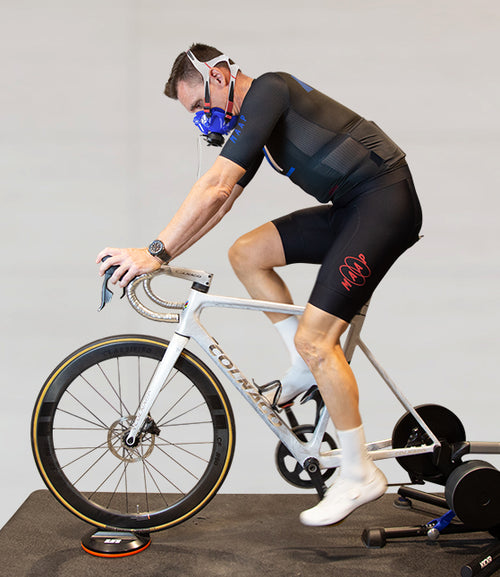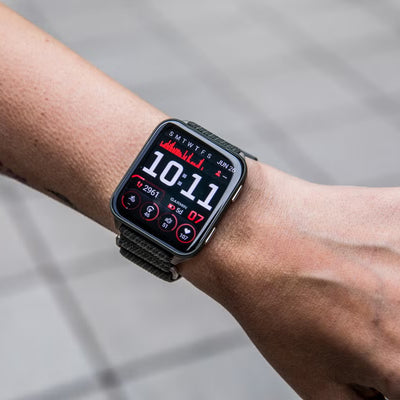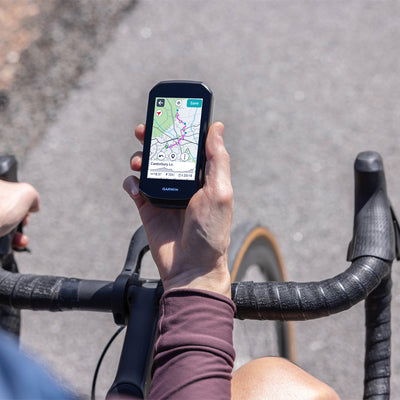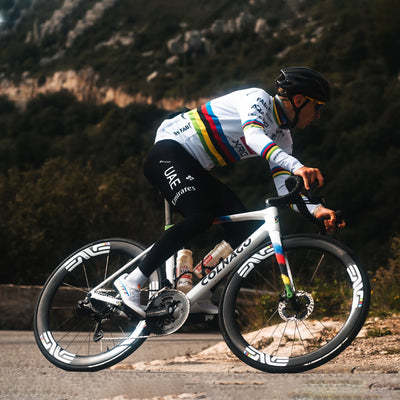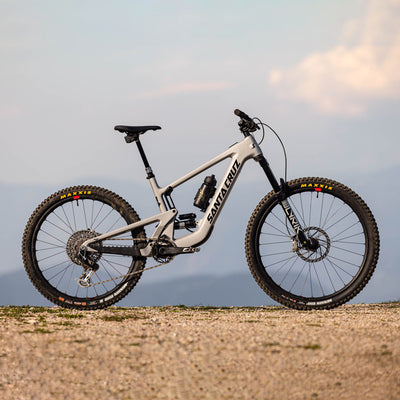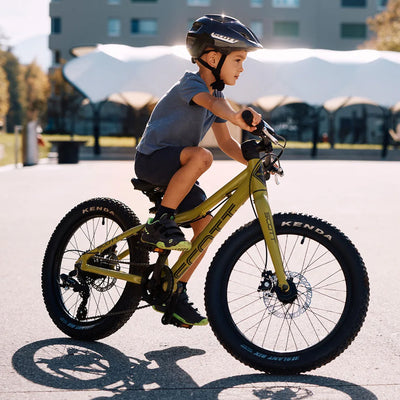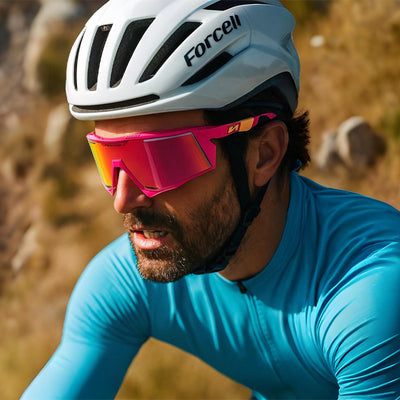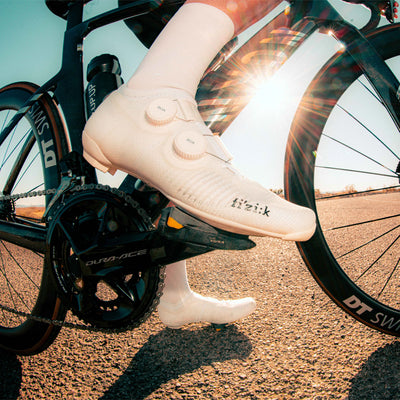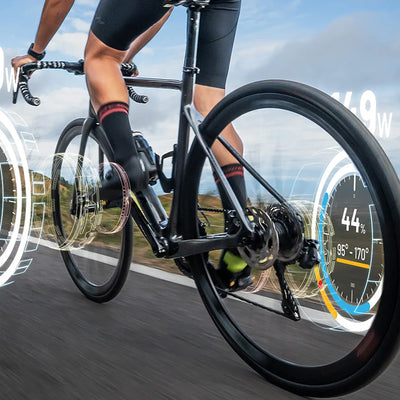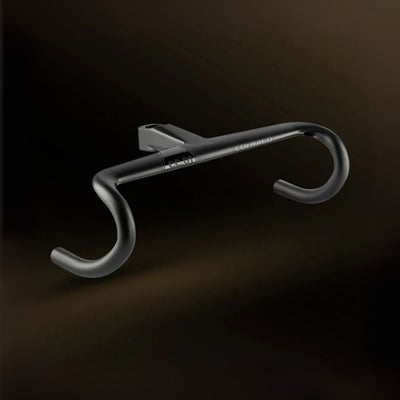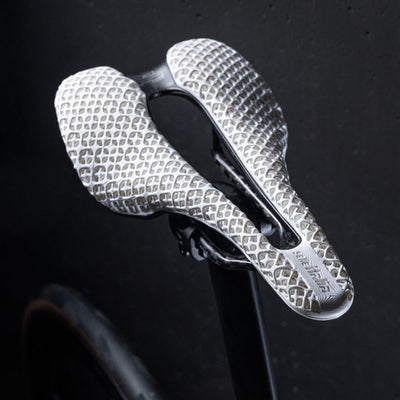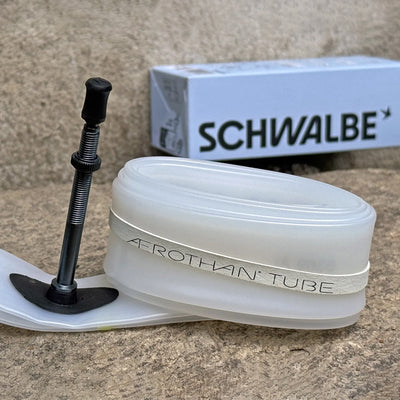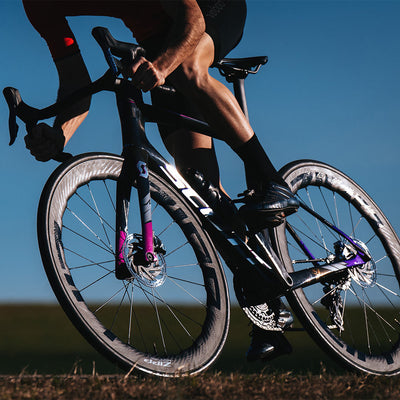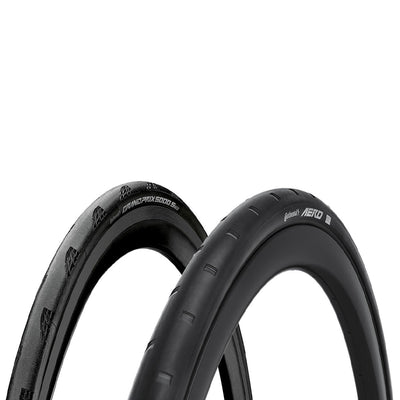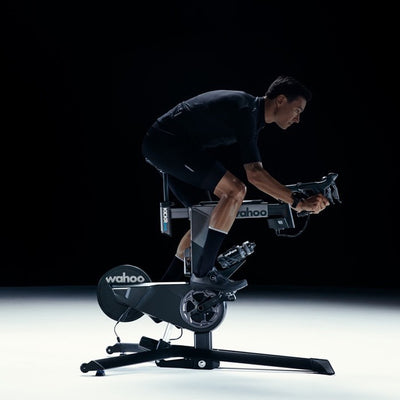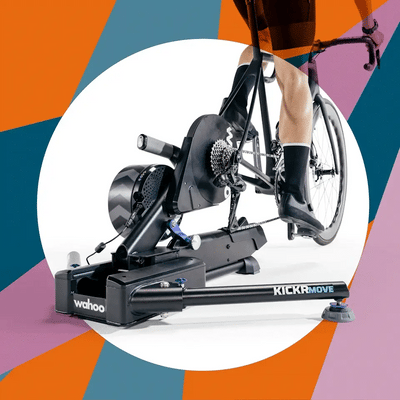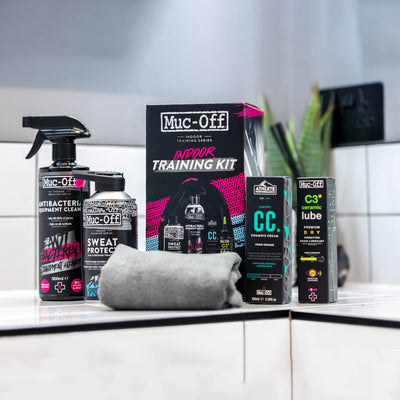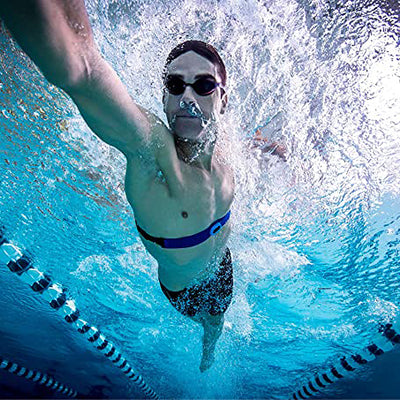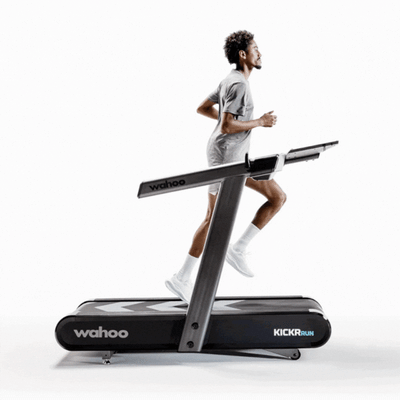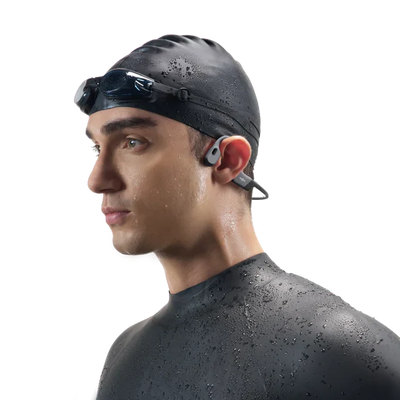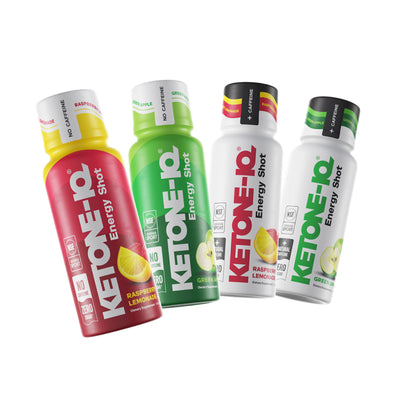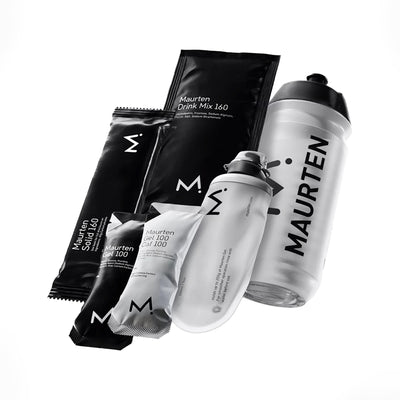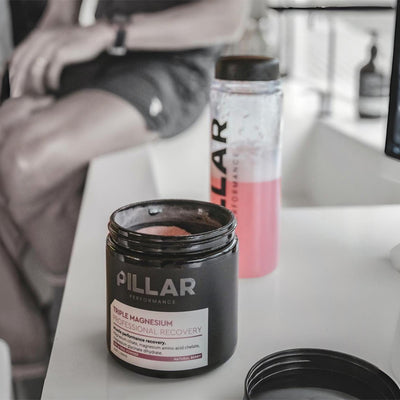Our Top Nutrition Tips!
I am Chane Jonker currently working at one of the top 10 best bike stores in the world – Wolfi’s. Being involved in sport all my life, most recently I was a full-time cyclist representing my country at the World Championships and racing all over the world. One of the most talked about topics as an athlete is always going to be nutrition.
Most people wanting to perform and compete at a high level are all training as best as they can, sleeping enough hours a day, doing the most to get recovery done right, have the equipment necessary to get the most out of their ride or effort but the one little thing that can hinder all that hard work is nutrition.
Nutrition can sometimes be a bit of a challenge to get right but at the same time be great once you understand what your body needs and how to make the most of it.
What are Calories?
A calorie is a measure of energy, the amount of energy you exert in doing an activity. A calorie measures how much energy it takes to raise 1kg of water by 1 degree Celsius.
Let’s start off with the basics – When looking at your fuel consumption note that 1 Kilo-calorie = 4.2 Kilo-joules so do not get confused when seeing these names.
So, what are the energy values of each of the different Macros per gram?
- Carbohydrates 4kcal per gram
- Protein 4kcal per gram
- Fat 9kcal per gram
- Alcohol 7kcal per gram
To pull that all together is saying that some Macros contain more energy than others like fats being energy dense is needed in lower quantities but will release more energy once broken down as opposed to a Macro like Carbohydrates that are more easily broken down by the body and releases energy more rapidly.
Fat is the main fuel source for long duration and low to moderate-intensity exercise. Fats also helps the body access the stored carbohydrate – glycogen. For high intensity exercise the primary source of fuel is carbohydrates.

How many calories do you burn??
There are a few different factors that will determine how much calories you burn during a workout such as weight, speed, intensity, duration etc.
Important to remember is you need to fuel your body and eat enough when you are embarking on a training regime. Eating adequately will help you feel good during your training and help you make the continued gains and avoid feeling low on energy, getting fatigued and compromise training and physiological adaptation.
During workouts you can break down around 60g of carbohydrate per hour depending on your body weight.
The suggestion is you need 1g of carbohydrate per KG of your body weight per hour. It is also important not to over-consume as well because the body can only utilize a certain amount at a time and too much sugar can cause one to have stomach discomfort.
There are different tools that you can use to gauge how many calories you burn, it could include an HR strap linked to your watch, power meter or different training devices (also important to consider are your daily activity levels such as work and private life when replenishing) as you have to fuel for the entire day and not just your workout.
Also important to note – different intensities of training taps into different fuel stores (intensity is also specific to each person, what might be a full out effort for you might not be for the person next to you). When looking to drop a bit of weight it is not advisable to under fuel to the extent where you are compromising your training, this will leave you feeling flat and have a negative effect on your recovery for the next day’s workout. Although doing fasted training sessions has its benefits as well.

The average rider will burn approximately 450–750 calories per hour of riding, although this is dependent on the rider’s weight, speed and intensity ridden at and the duration.
So what is BMR?
This refers to the amount of energy that a human body uses when completely at rest. The amount of energy your body needs to support vital functions such as breathing, blood circulation, regulating body temperature, brain and nerve function etc.
This is important to take note of, as it needs to be taken into consideration when looking at your fuel intake requirements. RMR refers to resting metabolic rate also known as REE referring to resting energy expenditure which is the number of calories burned at rest.
Here are a few factors to take into consideration when looking at your fueling strategy as all of these factors affect your daily caloric needs:
- Time or duration of workout.
-
The watts that are being exerted.
-
The intensity and time spent at the different intensities – Different intensities cause different reactions in your metabolism. For instance, high intensity exercise will increase your metabolism even post workout. A slow and steady workout will mainly burn the energy during the workout but not so much post workout. You will need to refuel the body’s glycogen stores during higher intensities as this is the fuel your body will tap into during the workout and that will be needed to recover post workout to feel good the following day.
-
Fats as source of energy – When wanting to use fats as an energy source you will have to be exercising at a lower intensity and longer distances where not a lot of oxygen is necessary.
-
Carbohydrates as source of energy – During high intensity exercise Carbohydrates are digested the easiest and the body’s preferred form of fuel.
- Refueling – When refueling it also makes sense to think about these different factors so you can consume the correct foods pre, during and post workout.
As an example, two workouts for the same person – considering the factors above:
- 3 Hours LSD steady endurance ride. This is a session where fats would be your energy source
- 1:30 ride with a 25 min steady warm up including a few high cadence spin ups, followed by 6 x 5 minutes VO2 max efforts with 5 min rest (easy riding) between each effort and 15 min easy spin cool down.
This is a session where carbohydrates would be your energy source.
Here is a guideline as to how many calories we naturally burn in a day:
Men burn 1,900 to 2,500 calories per day, depending on their level of activity and women burn 1,600 to 2,000 calories per day.
Here are two formulas used to calculate BMR for a more accurate number for men and women respectively to help establish how many calories you burn a day but note this varies when you add additional training and active work days. This is the Harris-Benedict equation, there are a few different calculations that can be used and for the most accurate information, you should see a nutritionist.
-
For men:
BMR = (10 x weight (kg)) + (6.25 x height (cm)) – (5 x age (years)) + 5
-
For Women:
BMR = (10 x weight (kg)) + (6.25 x height (cm)) – (5 x age (years)) – 161
Let us have a look at two examples:
Example One:
A male rider who weighs 85kg and is 185cm tall age 45 = 1786 calories needed excluding exercise and any activity levels.
Example Two:
A female rider at 65kg who is 170cm tall age 45 = 1326 calories needed excluding exercise and any activity levels.
Watts to Calorie conversion:
With many athletes and cycling enthusiasts using power meters nowadays, another method to calculate calories burned can include the Watts to calories method.
The calculation looks as follows:
You multiply your average power output on the bike by the number of hours of your ride, times by 3.6 and that will give you the number of calories burned.
Let us have a look at two examples:
Cycling computer reading an average of 200 Watts on your cycling computer x 3 hours ride x 3.6
200 x 3 x 3.6 = 2160 calories burned for the ride.
OR
Cycling computer reading an average of 414 Watts x 30 min ride
duration x 3.6
414 x 0.5 x 3.6 = 745kcal
If we look at carbohydrates or on bike nutrition such as gels and bars we can work out a day’s fueling strategy by establishing how much we need to consume.
As we mentioned above every gram of carbs has four calories. So for example if a person requires 1,600 calories a day, 800 calories would come from carbs—or about 200 grams total. This can be personalized by your event, needs or Macros that you are looking to reach.
Let’s see what is required by our bodies with the same two rides:
Cycling computer reading an average of 414 Watts x 30 min ride
duration x 3.6
414 x 0.5 x 3.6 = 745kcal
For a shorter ride like this I would recommend a gel or carbohydrates early on (even before if it is an all out effort) that are easy digestible or fast releasing. So if 1 carb = 4 calories and a gel contains 100 calories it comes close to 25g of carbs as there are other ingredients as well, most gel sachets are around 22g of carbs. Remember these calories do not include your BMR calorie requirement; it is purely what was burned in your effort. For a ride like this you will require only one gel bearing in mind that the body can only break down and absorb 60grams of carbs per hour; this is around 1gram of carbs per minute. For shorter efforts it’s easier – you can take a recovery shake after to replenish this. Not necessarily all carbohydrates but proteins as well.
For a longer ride like below:
Cycling computer reading an average of 200 Watts on your cycling computer x 3 hours ride x 3.6
200 x 3 x 3.6 = 2160 calories burned for the ride.
You will need to make sure you are fueling enough to sustain you throughout your ride. You will need to start consuming early on in the ride and not wait for the hunger to hit you. A combination of fast and slow releasing carbohydrates will be necessary to avoid a spike in energy and then a low after.
A bar and a gel and even real foods like a banana or small sandwich can be great options. It won’t necessarily be possible to replace all calories during a ride but require recovery after. Think of a Tour de France stage of 200km and how many calories this ride requires – it will be impossible to replace all the calories during the ride and impossible for your stomach to digest it as the blood flow needs to go to your muscles for the effort being put out and not to purely digest food which will cause stomach discomfort and leave you not feeling good.
A typical recovery shake will contain around 200-300 calories (mixed with water) per serving. Then your breakfast is also important where you can include some necessary calories prior to your ride. If you have for instance a gel of 100 calories, one juice bar of 105 calories and a banana 150 calories on the ride it puts you around 355 calories followed by a recovery shake after then you have already replenished around 600 calories. Then if you have water and one hydration drink on the bike there you have an additional 150-200 calories.
23g carbs in a banana, 22g carbs in a gel, 27g carbs in the juice bar, 51g carbs in 750ml hydration. This puts you at 123g of carbs for your on bike consumption and then 41g of carbs per hour if you eat every 45min-1hour. Bearing in mind there are sugars that are not listed as carbohydrates on the ingredients that need to be taken into consideration. With all this being said you should be feeling energetic and strong on the bike with a combination like this.
This is looking at calories to sustain performance day after day and maintain your weight but that might not always be the aim. Most of us are looking to lose weight while still being able to perform on the bike, feel good and satisfied with our food consumption. Then you won’t have to replenish every calorie 100% but rather 50% or however much you need to be in a slight/manageable calorie deficit.
Here we will be focusing more on fat as an energy source. If you are looking to lose weight you want your body to tap into your fat stores to but also not lose lean muscle mass. This can be achieved mostly in your endurance and low to moderate intensity exercises. These endurance rides should be longer in duration as it is an intensity that can be sustained longer. No workout will only use fat or only carbohydrates as energy source but you can do sessions that focus on your goal which in this case is utilizing fat as energy source. Where 1g of carbohydrates broken down by the body gives you 4 calories , fat at 1g will provide 9 calories which is much more energy – but to access these fat stores you need to be training in the correct intensity.
This also means you don’t need to fuel up as much and can keep the carbs on the lower end without feeling weak during your session. Doing a fasted ride can benefit you when you are looking to access the fat stores. Fasted rides are not recommended to be longer than 90minutes and it is important to not overindulge after the session but plan these sessions so you have a healthy meal or recovery supplement available in that recovery window. These are best done in the morning. Having a black cup of coffee can also be had as it has fat burning properties with zero calories and will give you that alertness during the session (this of course only if you are used to having coffee and not sensitive to the effects of caffeine as this will then have the opposite effect by leaving you feeling poorly and shaky).
“This does not mean you must slack on your hydration!”
Have your water and even use zero calorie electrolyte drops to keep your body hydrated. It is easy to consume too many calories as well and can hinder your ideal weight by actually gaining weight because of unused energy. It is also important to listen to your body and plan, this way you are prepared and can maximize your performance and reach your goals.
If you eat more calories than your body can absorb you will inevitably gain weight. This rate is also dependent on the source of calories as it gets broken down and digested at different rates in the body. Heat and humidity can also play a factor in this as the stomach receives less blood flow. Your appetite might even feel lower in the heat while exercising. So how many calories can you absorb per hour? Although it’s not an exact number for everyone it comes around to 275 calories per hour and not more than 400 calories. This is 60g – 90g of carbohydrates per hour. So it is not as simple as saying eating more food will make you go faster because it can’t necessarily be absorbed and utilized by the body at an optimum level if you over consume. The denser the food, meaning the more protein or fat it has, the longer it takes to digest. Simple carbohydrates, such as plain rice, pasta or simple sugars, average between 30 and 60 minutes in the stomach.
Now for a recommendation if this is more or less the amount of calories your body can absorb per hour, how many gels for example can you take?
If you burn 300 calories – (remembering 1 carb in the gel gives you 4 calories) a gel containing 22g carbs (22 x 4 = 88 calories) the rest of the calories in a gel consisting of other ingredients which puts one gel around 100 calories per gel. Then your body can absorb no more than 3 gels per hour. This is excluding the carbs and calories in your hydration drink.
Great video by Precision Nutrition explaining the different fuel sources and what fuel sources will be the best for certain activities – although this is on their products specifically it explains them very well:
How Carbohydrates are digested:
The Mouth:
The minute food hits your mouth carbohydrates will begin to be digested, the food gets moistened as you chew from the saliva secreted from the salivary glands by the enzyme amylase which starts the breaking down process of the sugars in the carbohydrates.
The Stomach:
Once the food is chewed into smaller pieces you swallow and the carbohydrates move through your esophagus to the stomach where the food is then referred to as chyme. In your stomach acids will be produced to kill the bacteria in the chyme before further digestion takes place.
Small Intestine, Pancreas and Liver:
From the stomach the chyme will move into the small intestine – the duodenum. From here the pancreas will release the enzyme pancreatic amylase to break down the chyme into dextrin and maltose. From here the wall of the small intestine begins to make maltase, sucrase and lactase. These enzymes will cause further breakdown of the sugars into monosaccharides which are single sugars. Finally the sugars are absorbed by the small intestine and then further processed by the liver where it can be then stored as glycogen or moved through the body in the bloodstream. Glucose can be used as energy due to the hormone insulin that gets released from the pancreas.
Colon:
Anything left over after this digestive process will proceed to the colon where it is broken down by intestinal bacteria. Fiber contained in many carbohydrates can not be digested by the body and will reach the colon where it will be eliminated with your stools.

The Body as a Fuel Tank
Fueling Up:
The best form of fuel is eating healthy balanced meals but supplementing with clean, high-quality products can really help with your performance. Reading the label is quite important as many products may seem great but are actually full of hidden ingredients that are not the best fuel. When reading the label, bear in mind that the ingredients quantities are listed based on the quantity the product contains – for instance if the label reads: Maltodextrin, Water, Fructose, Leucine, Citric Acid ; then Maltodextrin is the highest quantity ingredient present. There are also a lot of opinions and recommendations out there on what is best and what’s not, so be cautious to not believe everything you hear and rather go on the actual ingredients in the product and try it yourself. One thing that is not advisable is starting to use or try a new supplement product the day of a race or just before an event as it is best to experiment with these things during training to see how a product is working for you, if you enjoy the texture, flavor and how you feel after consuming the product. You do not want to throw away months of hard training because of a bad nutrition call or upset stomach on race day.
Glycogen:
Glycogen is the most important energy substrate during exercise especially at higher intensities but will be depleted regardless if not enough carbs are consumed. This is because glycogen is preferred over blood glucose as fuel.The amount of muscle glycogen content in active muscles depend on:
- Gender
- Body weight
- Body composition
- Certain exercise types
- Fitness levels
- Diet
Utilization of Fuel in the Body:
Before starting the replenishing process let’s have a look at where the body stores energy, carbohydrate can be utilized in the blood where it is used to maintain blood sugar levels or stored in the liver and muscles where glucose gets converted to glycogen as a readily available source of energy. During high-intensity exercise the main fuel source the body taps into is carbohydrates, during lower-intensity exercise fat is the main source of fuel, protein is not the main source of fuel used during exercise but will rather come into play once the body runs low on glycogen. Protein’s main function is for recovery and the replenishing phase that your body uses as building blocks for muscle growth and recovery. Although carbohydrates and fat is the main sources of fuel, protein can be used as an energy source to a certain extent – one of the body’s uses for cortisol is to catabolize lean body mass (i.e., muscles) for use in a process called gluconeogenesis, in which the body converts protein to a usable source of fuel.
Another less spoken about form of energy is Lactate, the lactate that builds up in the muscle tissue during intense exercise can travel to the liver and be converted into glucose where it can return to the muscle cells that need it and can then be used to make ATP – ATP or adenosine triphosphate is the ‘energy currency’ our bodies use to fuel exercise). This being said – lactate is not a bad thing, lactate is a substance made during intense exercise when there may not be enough oxygen available to break down glucose and glycogen. Our bodies can convert this lactate into energy without using oxygen and is not harmful. Lactic acid build-up can in some cases result in some muscle pain, muscular fatigue, and cramps in some cases but this all will subside after the workout or a few hours to a day after.
Basic recovery methods can help speed up this process. Then we have Insulin, insulin plays a role in regulating blood sugar levels and converting food energy into fat. It also helps break down fats and proteins. During digestion, insulin stimulates muscle, fat, and liver cells to absorb glucose and inhibits the breakdown of fat in the adipose tissue or better known as body fat. Why is this an important role? It helps regulate and supply our body’s needs by supplying the necessary energy that it needs for daily activities. Sugars and carbohydrates cause in increase in insulin levels to increase the blood sugar levels and supply of energy thus looking at your eating schedule incorporating carbohydrates pre, during and post-workout will give you the energy required for the training demand and help you replenish the glycogen stores after exercise to help you recover better. That being said, not all carbs are created equally and as a rule it is best to avoid foods that are highly processed that can cause an insulin spike and make you feel low on energy soon after. Examples of carbs include foods like oats, bananas, sweet potatoes, potatoes, rice etc. during activity it is ok to add some more refined carbs that will release energy more rapidly as it will give you the energy needed during your training. Evenings is a time where you could cut on the carbohydrates as you will start to become less active and won’t need as much energy while sleeping and top up with some lean proteins, salads and non-starchy vegetables. Studies also show that 20g – 40g of casein (the main protein present in milk – found in protein supplements) ingested by adult men around 30 minutes before going to bed have maximising results in muscle mass and strength gains when participating in resistance training if the individual is not sensitive to dairy products.
Here are some ideas of meals, oats with berries and milk of choice, you can even throw in some protein powder, Greek yogurt or nuts and seeds to either increase protein or fats. Post-workout a recovery shake or smoothie with protein powder, a banana and even some greens like spinach. Meals like potatoes or sweet potato with some chicken, avocado and tomatoes or rice with salmon and broccoli, the main thing is to fuel your body with well balanced whole foods to help you feel good. In some cases, if you find yourself in an unprepared situation after a ride the emergency garage stop can be better than having nothing ; as long as it has protein and carbohydrates and is not too fatty.


Glycogen:
As athletes we want our nutrition and fuel to work for us in the best possible way to help us perform at our absolute best. That is why we have to ensure we consume the correct foods and correct amounts of it to do so. As an athlete we do not want to get to the point mid-race or session where our glycogen stores are empty and we end up feeling flat and if not re-fueling fast enough reach that oh so unwelcome BONK. This compromises the entire workout or can even cost you the race as at times you can not replenish fast enough and you will finish the race on fumes and also comprise your recovery for the next day’s training. It is always a good idea to have either a well-balanced meal or recovery shake post-workout as this will help you recover for the next session and also avoid muscle breakdown. A recovery shake is sometimes easier to consume as we do not always feel like eating after a training session, but the aim is usually within 30 minutes or so post-workout. A shake also makes it easy to assure you’re replenishing the correct macros which would be protein with some carbs to replenish the depleted glycogen stores and help the body digest the protein, usually there is only a small amount of fats needed post-workout. During exercise you are actually causing small tears in the muscle, which then we need to help recover so you can adapt, make progress and become stronger after.
Different Energy sources used during different intensities and duration:

Another thing to take into consideration is men and ladies do not necessarily require the same fueling strategies. Women can benefit from understanding their hormones and fueling needs to accommodate their training load, recovery, and racing plans.
Hydration:
Hydration is a big topic on its own but goes hand in hand with your fueling routine. Especially when you know you are going to be exercising in hot and humid conditions where you will sweat excessively your hydration prior to the efforts are important. Using electrolytes and hydration tablets are a great way to ensure you hydrate adequately without consuming too many sugars and calories. During your activity, a training mix or racing mix with a gel is great as it will give you some electrolytes with the needed carbohydrates and sugars to keep you feeling good and energized to finish strong.
A great product is the Isotonic gels that contain water, this makes it easy to drink during an effort, avoid stomach discomfort and there is no need to drink water directly after consumption. Some gels contain caffeine which has its performance benefits, be sure to take note of the quantity of caffeine in each sachet to ensure you don’t overdo it especially if you are sensitive to caffeine. You can always alternate between gels with and without throughout the race or session.
There are many factors that can contribute to cramping, one of them being dehydration and electrolyte imbalances. In the case of cramping salt sticks, cramp tablets and electrolyte drops can be taken to give you some relief as it contains high concentrations of the needed electrolytes, minerals, and vitamins that helps the body with muscle function. Besides cramping, dehydration can cause loss of focus and in severe cases can be a danger to your health.
For instance if you look at GU their Roctane gels differ from their standard gels as they contain higher amounts of sodium and electrolytes. The biggest difference between GU Roctane gels and regular GU gels all comes down the smallest of ingredients. The quantity of Branched Chain Amino Acids (BCAAs) is in higher supply in Roctane, as well as the addition of two more essential amino acids – beta alanine and taurine.This will be recommended for rides where it is warm and excessive sweat loss will take place and also long distance events.
Importance of Sodium:
This is the main electrolyte lost during sweat – sodium’s role is to maintain fluid balance, assists with nerve transmission, muscle contraction and cognitive function. We can’t create sodium in the body. That’s why it is important that we replace this electrolyte by ingesting it through the various fuel sources and table salt. The amounts we lose are specific to each individual 2000mg – 3000mg is the guidelines per day but will be much too low for an endurance athlete. Cramping, diluted electrolyte balance etc. are all effects for the lack of sodium intake. This can be distinguished by how long the activity is,the clothing you wear and environmental conditions, as well as your personal sweat rate.
Great video on nutrition and timing of fuel (also using beetroot, vitamins, whole foods and antioxidants for performance) by Coach Dylan Johnson for endurance athletes:
Let’s look at some of the products that we have in store:

Slow release carbohydrate and hydration drink mix.
- 1 x 600g
- Slow release carbohydrates
- Electrolytes
- Developed with Pro Team
- Ideal for fat burning training
- Natural Flavouring
Directions for Use:
Add 2 scoops (25g) to 600ml of water, shake vigorously. Consume within 24 hours of mixing.

The world's most advanced isotonic energy gel.
- 1 x 60ml
- The world's most advanced isotonic energy gel
- Multiple energy subtracted including sticky rice starch and fructose
- Naturally flavoured and sweetened for a great taste
- Provides a quicker supply of energy to the working muscles than a non isotonic gel
- Designed to be consumed without water
- Easily digestible and light on the stomach
Directions for Use:
Consume up to 3 sachets per our during exercise as required. STEALTH isotonic gels do not need to be consumed with water. Always keep hydrated. Store in a cool dry place. Do not refrigerate.
Ingredients and their purpose:
When looking at a gel for instance the ingredients differ from a training hydration mix and a racing hydration mix as well as a juice bar. These ingredients listed above are intended to give you fast releasing energy like fructose whereas the juice bars ingredients are more steady release ingredients and quantities like isomaltulose (palatinose) which improves fat oxidation and prolongs energy supply. When you look at the gel recommendation you can see that it is similar to our calculations on what the body is able to absorb within an hour.

The easy to eat energy bar.
- 1 x 50g
- The easy to eat Energy bar with prolonged energy release
- Great fruit taste with satisfying texture that's Vegan friendly and Gluten free
- Contains isomaltulose (Palatinose)
- Natural flavouring
Suitaible for Vegans
Directions for Use:
Consume up to 2 sachets per our during exercise as required. Always keep hydrated. Store in a cool dry place.

Looking at the ingredients once more the training drink contains Isomaltilose for a more steady energy supply that would be your drink of choice during longer and more steady intensity rides where the energy mix below has the main ingredients Maltodextrin and Fructose promoting rapid energy release once again that you would look for in higher intensity workouts or events and even shorter more intense sessions. It is important to follow the guidelines on the serving suggestion to benefit from consuming these products and reading the labels and knowing the ingredients that you are consuming to assure you choose the correct product for your desired performance benefits.
Fructose, or fruit sugar, is a simple sugar found in many plants, where it is often bonded to glucose to form the disaccharide sucrose. It is one of the three dietary monosaccharides, along with glucose and galactose, that are absorbed directly into blood during digestion and this is why it is a fast acting energy release.
Isomaltulose is a disaccharide carbohydrate composed of glucose and fructose. The glucose and fructose are linked by an alpha-1,6-glycosidic bond. Isomaltulose is present in honey and sugarcane extracts. It tastes similar to sucrose (table sugar) with half the sweetness. Isomaltulose is also known by the trade name Palatinose. Like sucrose, isomaltulose can be digested to glucose and fructose. However, while in sucrose the glucose is linked to the anomeric carbon of the fructose (an α-1,2 linkage), in isomaltulose the linkage is to the 6 carbon (α-1,6), making isomaltulose a reducing sugar, unlike sucrose. Isomaltulose is digested and absorbed slowly, and gets gradually released as glucose and fructose into the bloodstream that is why it is better to consume during lower intensity, longer rides.
There are 4 types of sugars namely:
- Glucose
- Fructose (a.k.a. fruit sugar)
- Sucrose (a.k.a. table sugar)
- Lactose (a.k.a. dairy sugar)
Simple sugars, also called monosaccharides, include glucose, fructose, and galactose. Compound sugars, also called disaccharides or double sugars, are molecules composed of two monosaccharides joined by a glycosidic bond. Common examples are sucrose (table sugar) (glucose + fructose), lactose (glucose + galactose), and maltose (two molecules of glucose). In the body, compound sugars are hydrolysed into simple sugars.
The collection of B vitamins found in the mixture is great for:

This is just using our Stealth product as an example, these ingredients are all found in different ratios and compositions across other nutrition brands but the ingredients and their purpose stay the same.
Advances Carbohydrate formula with added electrolytes.
- 1 x 660g
- Advanced carbohydrate formula with added electrolytes
- Ideal training and racing blend
- 7% carbohydrate solution
- Natural flavours, no artificial sweetners
Suitable for Vegans
Directions for use:
Add 5 rounded scoops (40g) to 500ml of water in your Secret Training Bottle and shake vigorously.

For nutritional based products, kindly visit the below link:
Frequently asked questions:
Many athletes struggle to eat during their training session, why is this and what can they do?
This is because the gastric system is sensitive and things like pre-race nerves and exercise that includes a lot of motion can make it hard to keep your food down. Do not eat big heaps at a time but rather small bites and take sips of your drink throughout. Be careful of too many fruits, especially dried fruit as this can cause a bit of bloating. Having a bite or two of a banana or a high-quality energy bar for example every 30 minutes instead of the entire banana an hour into the ride. Having a good hydration race or training mix in your bottles is crucial if you struggle to eat to ensure you replenish some form of fuel.
Should we carbo-load before a long ride or event?
Eating a meal high in carbohydrates throughout the day or evening before an endurance event or race will definitely be beneficial as you want to ensure you have adequately filled up your glycogen stores BUT packing on the carbs too much for a week prior to an event is not only going to result in a bit of weight gain but also digestive discomfort and leave you feeling sluggish. It is a good idea to eat well-balanced meals as you normally would and just add a bit more carbs additionally to these meals. Do not drastically change the way you eat before a race as you want to try these things during training and see how you feel and figure out what works for you.
How frequently should we consume energy gels?
The rule of thumb without going into too much detail is one gel per hour of every 45-60 min. There is no need to overdo this, taking multiple gels in an hour will not give you multiple hours worth of energy but rather stomach discomfort as the blood needs to be directed to the active muscles rather than the stomach. Have a sip of water after taking the gel to take away the sweetness in your mouth and help the stomach with digestion.


